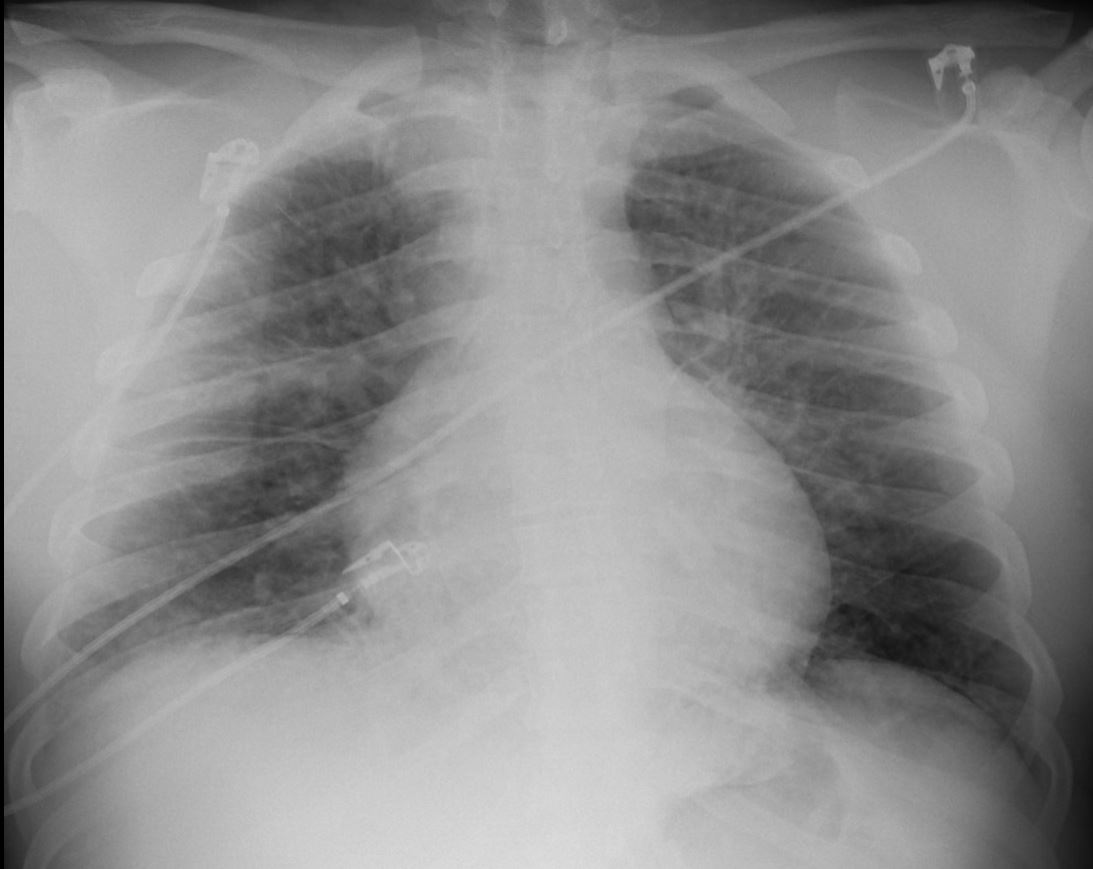
You’re called to see a patient with rapidly worsening shock.
On the monitor you see the waveform on the left.
An intervention was performed leading to the waveform on the right, within 5 min.
What’s the problem?
What improved it?
#HemodynamicsWaveformChallenge

On the monitor you see the waveform on the left.
An intervention was performed leading to the waveform on the right, within 5 min.
What’s the problem?
What improved it?
#HemodynamicsWaveformChallenge


Oh and btw I’ll give the case conclusion and explanation tomorrow so there’s enough time to accumulate some crowd answers and wisdom!
Time to resolve this case!
What should an arterial waveform look like?
Here's a beautiful example from @derangedphys
derangedphysiology.com/main/cicm-prim…
What should an arterial waveform look like?
Here's a beautiful example from @derangedphys
derangedphysiology.com/main/cicm-prim…

Compare that to our tracing. Here we have two peaks in systole and what appears to be interruption of flow about midway through systole.
The BP here is about 75/55. That plus the relatively small AUC of the systolic component suggests the stroke volume is very low.
The BP here is about 75/55. That plus the relatively small AUC of the systolic component suggests the stroke volume is very low.

When you see systolic morphology like this, suggesting interruption of flow, LVOT/aortic outflow obstruction should be considered.
This is the classic pulsus bisferiens morphology that many of you suspected.
Surprisingly few well done papers out there on this, many are ancient
This is the classic pulsus bisferiens morphology that many of you suspected.
Surprisingly few well done papers out there on this, many are ancient
The clinical scenario in this case was a patient with a ballooned LV apex (LAD infarct vs ABS) and SAM leading to an LVOT gradient of nearly 100 mmHg.
Complicated by bleeding and acute liver failure.
Complicated by bleeding and acute liver failure.
The immediate intervention in this case was only to provide a 500 ml fluid bolus which resulted in the following waveform within about 5 minutes. Cardiac index rose by 50% as well. BP is now 115/80. HR only changed from 110 to 105. 

There is more in this "post fluid" waveform.
The slope to systolic peak looks a little delayed which may reflect ongoing (improved) outflow resistance. Sometimes this is seen in AS.
The deformation (purple arrow) I think is an early anacrotic notch but input welcome
The slope to systolic peak looks a little delayed which may reflect ongoing (improved) outflow resistance. Sometimes this is seen in AS.
The deformation (purple arrow) I think is an early anacrotic notch but input welcome

LVOTO requires we think differently about shock: these patients often need a primary vasoconstrictor strategy, +/- esmolol for HR control, increased diastolic time, decreased inotropy
For a more complete and elegant discussion of LVOTO see @iBookCC by @PulmCrit, as well as the podcast with @adamdavidthomas
emcrit.org/ibcc/lvoto/
emcrit.org/ibcc/lvoto/
In that chapter there are some great FOAM images to see the echo characteristics (including CW doppler) necessary to make this diagnosis
The key teaching point here is that the arterial waveform contains way more information than SBP, MAP, and DBP.
To me this diagnosis became highly probable as soon as I walked into the room and saw the arterial waveform morphology
To me this diagnosis became highly probable as soon as I walked into the room and saw the arterial waveform morphology
Being able to read the waveform like an EKG or vent waveform can help you better characterize your patients in shock.
I hope to bring you a resource to do just that in the next year, stay tuned 😉🤓
/END
I hope to bring you a resource to do just that in the next year, stay tuned 😉🤓
/END
• • •
Missing some Tweet in this thread? You can try to
force a refresh












